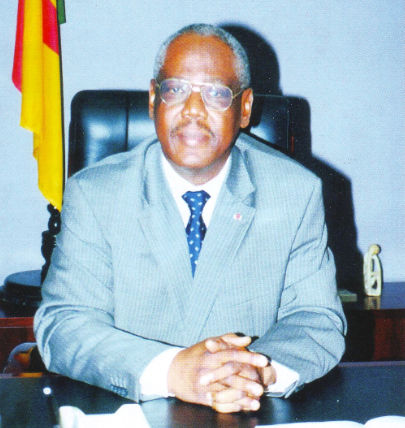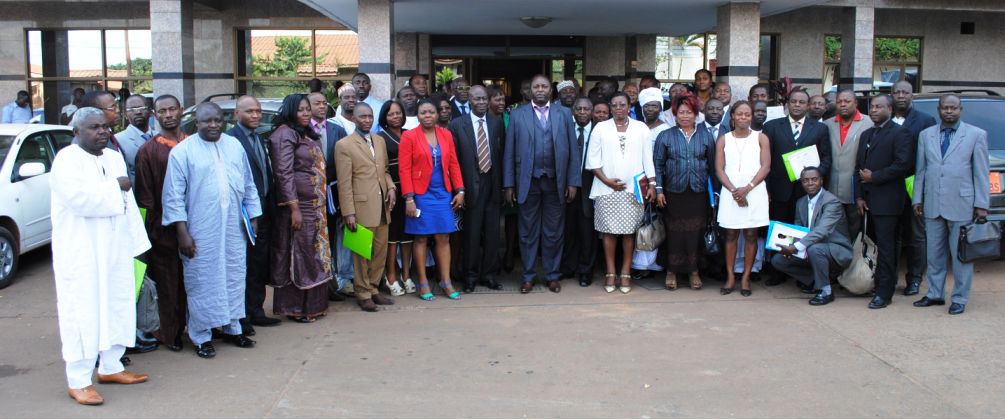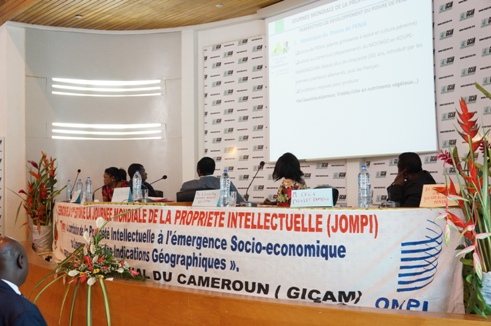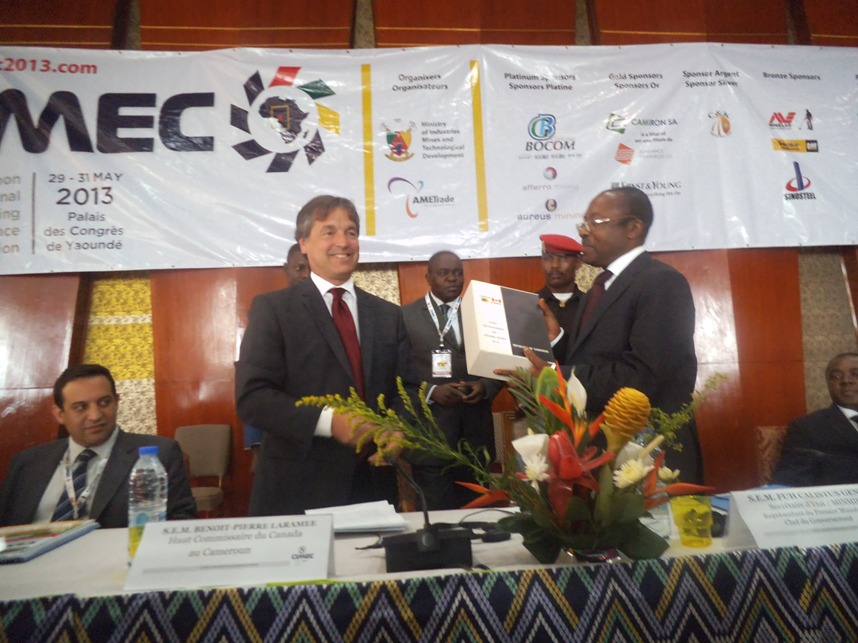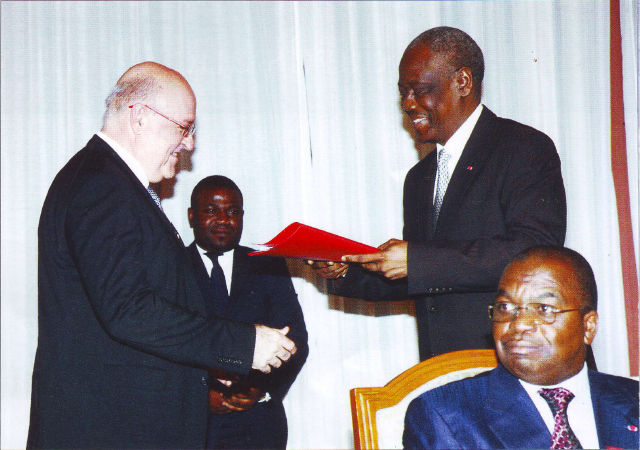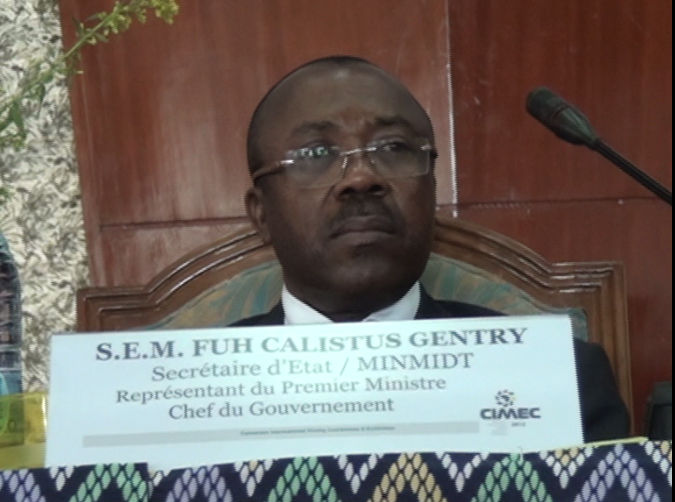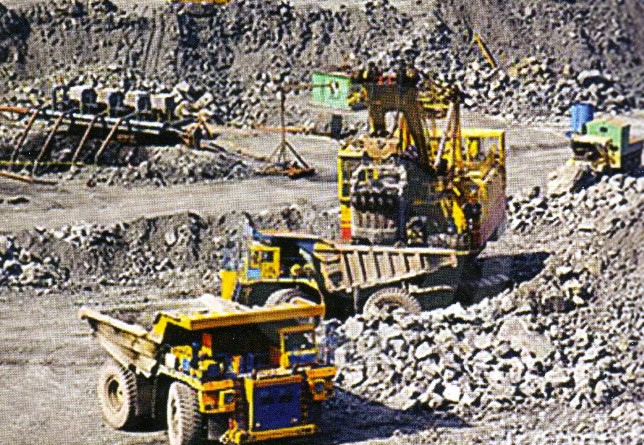Geophysical and geological data
The President of the Republic wishes that an ambitious policy should support the take off of the mining extractive industry, by elaborating strategies that can lead to a globally competitive,strong,efficient mining sector, capable of creating wealth and value.
This vision of the Head of State is based on the eloquence of Cameroon’smineral potential. It is estimated that the information on the soil and sub-soil are known at about 40%. It is not superfluous to note that this potential will be even more important if the prospectionwork should cover a greater part of the territory.
Because they are creators of wealth and values, mining projects are bearers of a lot of hope and are de factoleading projectsfor the revival of economic growth geared towards making Cameroon an emerging countryby the year 2035.
Indeed, any mining exploitation generates direct or indirect revenues to the State. Direct revenues are related to the various taxes such as corporate tax, licence, VAT, surfacearea,ad valoremand customs taxes, etc. Indirect revenues are mainly due to the fact that the State has the possibility to have a participation in the exploitation of at most 10%. In addition, the services related to the exploitation in terms of the supply of spare parts and various works also yieldrevenue related to the taxation of these services. The cumulative contribution of these various revenuesconstitutes a significant increase in expected State revenue.
The reform of the mining sector initiated by the MINMEE, in collaboration with the World Bank has led to the enactment of Law No. 001 of 16 April 2001 on the Mining Code and Decree No. 2002/648 PM of 26 March 2002 to lay downits implementation rules.This Law was recently amended and supplemented by that No. 2010/011 of 29 July 2010.
This particularly attractive regulatory framework, instrument whose suitability for promotion of our mineral resources is obvious, has led to the attraction of investments in the so-called "solid" mine sector.
OVERVIEW OF CAMEROON’SMINERAL POTENTIAL
Cameroon enjoys a geology composed of five major geotectonical units (the croton,the crotoncover, the Pan-African belt, the sedimentary basins and the volcanic cover);hence the existence of several mineral resources favourable to mining activities.
Briefly, Cameroon has a proven but modest hydrocarbons potential,
- one billion one hundred and sixty million tonnes of bauxite,
- Two hundred billion cubic metres of natural gas,
- Several million tonnes of iron,
- Two hundred and fifty thousand tonnes of cassiterite,
- Three million tonnes of rutile,
- Several tons of gold and diamond,
- More than six million tons of limestone and marble,
- Significant reserves of pozzolan, silica sand, salt, clay, nephelinesyenite, pink granite, mineral waters.
- Several other mineral substances have been revealed so far. These are: sapphires and corundum, titanium, kyanite, lignite and oil shale, uranium, cobalt, nickel, molybdenum, manganese, zircon, rare earths, constructionmetals, hot springs.
Among the thirty substances discovered:
- 9 (nine) can be exploited industrially; they are: oil, natural gas, bauxite, iron, rutile, nickel-cobalt-manganese, diamonds, mineral waters, building materials (limestone, pozzolan, marble, stone, clay, sand, ...);
- 4 (four) are presently being exploited on an industrial scale; they are: oil, building materials, diamond, mineral and spring waters;
- 3 (three) are currently exploited in an artisanal manner; these are: gold, diamond and sapphire;
- 2 (two) are currently subject to an exploitation permit for solid mine, these are: a) the Lomiénickel-cobalt-manganese by the GEOVIC CAMEROON SAcompany; b) the Mobilongdiamond by Cameroon and Korea Mining Incorporation (C & K Mining)Company;
- 2 (two) are in imminent expectation of exploitation permits: the Mbalamiron by the Cam Iron company that has just signed an agreement with the government and the Minim-Martapand Ngaoundalbauxite by the Cameroon aluminaCompany whose Convention will soon be signed.
- The other substances can be considered today, either as accompaniment tothe main substances (lead, copper, zinc, barium, arsenic, graphite, zircon), or as geochemical anomalies (gold, barium, rare earth, lead, zinc,chromium), or even as indices of primary and alluvial mineralization (lignite, oil shale, zircon, rare earths, molybdenum, tungsten).
It is estimated that the information on the soil and sub-soil are known at about 40%. It is not superfluous to note that this potential will be even more important asprospection work will cover a greater part of the territory.
Mining potential
The mining potential known at 40% of the territory where research was carried out can be schematically presented on the map of mineral resources below:
Fig.1: Map of Cameroon’smineral resources
The synthesis of the various mining titles can be summarized in the table below:
Table 1: Current titles and permits
Some of these titles, are subject to major projects, such as :
Cobalt/Nickel
The Lomié Cobalt-Nickel deposit is a world class deposit.
The promoter is the GEOVIC Company. The following works are envisaged:
-the works on the fieldhave made it possibleto discover a number of mining indices among which are, the Cobalt, Nickel manganeseindexofNkamouna, North Mag, SouthMang, Messea, Kondong, MadaandRapojombo;
- 2002, signing of a mining convention;
-2003, a valid exploitation permitfor Cobalt, Nickel and related substances is issued toGeovic Cameroon;
- Drilling work andreserves estimated at 68 million tonnes with content for reservations:
Cobalt: 0.26 % (2.6 kg of Co per tonne of ore);
- Nickel: 0.66 %;
- Manganese: 1.48 %.
- Cobalt is associated with several other metals (Ni, Mn, Fe, Al) in a mineral called ASBOLANE, making its treatment complex
-Earmarked annual production: 4160 tonnes of cobalt, 3280 tonnes of nickel, 45 000 tonnes of manganese;
- Cost of the project: 400 millions US$;
- The construction of the mine (cost estimated at 380 M USD) which is underway;
- Direct jobs: 300 to 400.
Bauxite
Six bauxite indices and deposits have been identified in:
- Minim-Martap: Bauxite resources are estimated at over one billion tonnes at an average grade of 41.3% alumina.
- Ngaoundal:the Bauxite resources are estimated at 120 million tonnes at an average grade of 41-43% alumina.
Minim-Martapand Ngaoundalbauxite project
- Promoter company: Cameroon Alumina Limited (CAL);
- Estimated resources: 500-700 Million tonnes;
- mining agreement under elaboration;
- Estimated project cost: 5 to 6 billion;
- Jobs considered: 2500 to 3000 direct jobs.
- FongoTongo: This is a research permit under exploration, but we know at least the level of resources that is 46 million with an average grade of 47% alumina.
Iron
About 25 targets and deposits have been identified the three major fields of which are:
- Mamelles:the iron resources are estimatedat 340 million tonnes at 35% of iron oxide. The promoter of this permitis the SINOSTELL CAM Company.
- Mbalam:The iron resources are estimatedat 220 million tonnes, these resources were subjectto the signingof a convention in November 2012.
-Promoter of the project: CAM IRON S.A. (subsidiary of the Australian Sundance Resources);
-Production and export of 35 million tonnes (DSO) from the MbalamandNabebairon ores (see project file);
-Cost of the project: about 3.5 billion dollars;
-Earmarked jobs: 10 000 direct jobs.
- Nkout:the iron resources are estimated at:
- 1.19 billiontonnes (indicated resources);
- 1.33 billion (inferred resources);
- 25 million tonnes (DSO).
The promoter of this permit isthe CAMINEX Company.
- Diamond
- Artisanal exploitation in the border area with CAR;
- Other diamond rich areas areKetté, Boubara, Lom, Boumbe 2,BetareOya,Yokadouma and GariGombo;
- Several indices are found in the Djarange (e.a.Mobilong);
- Project promoter: C & K Mining Company;
- Current situation: certification work completed;
- Start of first export: January 2013.
- The diamond deposit is about 750 million carats (geological estimate).
- Projected Investment: 250 million Eurosover 25 years.
Gold
At least 140 targets have been identified essentially:
- the Yokadoumarange,
- theLom range,
- theMbéré range,
- the Mayo Rey field.
Gold extraction project:
- African Aura Resources (UK): thecompanyis in the exploration phase and prospection permits in several regions like inBatouri, Tcholliré, Akonolinga or Rey-Bouba ;
-FMRC (Fametal Mining Resources Cameroon) (China) is in the exploration phase atMang, Boulou, Mompwe (East) ;
- Caminco (South Africa) has gold exploration permits in the North.
Otherprecious stones
Onefinds concentrations ofSapphirein the Adamawa region, particularlyinTignère, atManfé, in rivers MunyaandNsananarikati.
- Tin
We also note the presence of Tinin Mayo Darle.
- Rare earths
In the South-East of the country, we note the presence of rare earth (monazite) in the DjaRiver.
Opportunities associated to the mining sector
Other business opportunities will certainly be created around these exploration works and the opening of the mine. These would include:
- Laboratory (planned to be constructed and equipped by the Koreas;
- Infrastructures (port, roads, etc.);
- Manufactureofcartridgesand explosives. Development in the long term of a transformation industry.
The Mining Code provides for at least15% transformation of the ores producedon the spot, this will permit the development and implementation of the project of transformation ofIron, Cobalt, Nikel, Alumina (FECONA).
Opportunities on 60% of the national territorywhich are not yetstudied
These 60% arethusfreefor potential investors in terms of mineral exploration.
CONCLUSION
This mining potential is mainly situated in 40% of the national territory, wherethe exploration was carriedout. What still remainsnow is to carry out explorationover the remaining 60%.
The exploitation of theseresources will favour the expansionof the mining sector which, truly, will position itselfasan engineof renewed growth.
"In addition, the development of the mining sector through its culminating effects on the rural sector and its relative importance in the country’s economic structure, constitutes an important anchor around which the creation of wealth and jobs can be articulated, as well as the fight against poverty"



